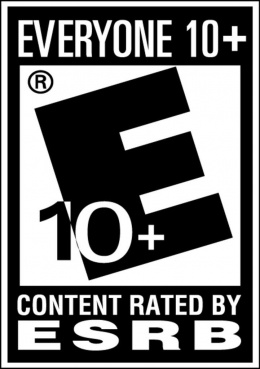Difference between revisions of "Video Game Content Rating Systems"
| Line 1: | Line 1: | ||
[[File:Ratings1-jumbo.jpg|260px|thumbnail|An example of a rating from the ESRB found on video game boxes in North America. This rating Everyone 10+ generally denotes a game suitable for an audience above the age of 10.]] | [[File:Ratings1-jumbo.jpg|260px|thumbnail|An example of a rating from the ESRB found on video game boxes in North America. This rating Everyone 10+ generally denotes a game suitable for an audience above the age of 10.]] | ||
'''Video game content rating systems''' are designed to be standardized systems serving the purpose of classifying video games based on their suitability for target audiences. The body responsible for the regulation varies from country to country and follows standards set by that specific region. Some of these regulatory systems are independent, while others are run or guided by their government. Given the vast amount of national rating boards, some developers have called for an international regulatory body to be formed to standardize these ratings on a global scale. <ref>Polygon https://https://www.polygon.com/2012/11/15/3648978/head-of-ea-calls-for-single-universal-rating-system-across-all</ref> In response, the International Age Rating Coalition (IARC), was introduced seeking to become the sole rating board globally, while still reflecting the unique cultural differences among nations and regions. <ref>IARC Website https://www.globalratings.com/</ref> However, it is important to note that only countries and regions that are not represented by a participating rating authority recognize the legitimacy of this system.<ref>IARC Website Rating Guide https://www.globalratings.com/ratings-guide.aspx</ref> | '''Video game content rating systems''' are designed to be standardized systems serving the purpose of classifying video games based on their suitability for target audiences. The body responsible for the regulation varies from country to country and follows standards set by that specific region. Some of these regulatory systems are independent, while others are run or guided by their government. Given the vast amount of national rating boards, some developers have called for an international regulatory body to be formed to standardize these ratings on a global scale. <ref>Polygon https://https://www.polygon.com/2012/11/15/3648978/head-of-ea-calls-for-single-universal-rating-system-across-all</ref> In response, the International Age Rating Coalition (IARC), was introduced seeking to become the sole rating board globally, while still reflecting the unique cultural differences among nations and regions. <ref>IARC Website https://www.globalratings.com/</ref> However, it is important to note that only countries and regions that are not represented by a participating rating authority recognize the legitimacy of this system.<ref>IARC Website Rating Guide https://www.globalratings.com/ratings-guide.aspx</ref> | ||
| + | ==History== | ||
==Criticism and Ethical Concerns== | ==Criticism and Ethical Concerns== | ||
==Popular Rating Systems== | ==Popular Rating Systems== | ||
Revision as of 18:34, 27 January 2022
Video game content rating systems are designed to be standardized systems serving the purpose of classifying video games based on their suitability for target audiences. The body responsible for the regulation varies from country to country and follows standards set by that specific region. Some of these regulatory systems are independent, while others are run or guided by their government. Given the vast amount of national rating boards, some developers have called for an international regulatory body to be formed to standardize these ratings on a global scale. [1] In response, the International Age Rating Coalition (IARC), was introduced seeking to become the sole rating board globally, while still reflecting the unique cultural differences among nations and regions. [2] However, it is important to note that only countries and regions that are not represented by a participating rating authority recognize the legitimacy of this system.[3]
Contents
History
Criticism and Ethical Concerns
Popular Rating Systems
Computer Entertainment Rating Organization
Entertainment Software Rating Board
International Age Rating Coalition
Pan European Game Information
References
- ↑ Polygon https://https://www.polygon.com/2012/11/15/3648978/head-of-ea-calls-for-single-universal-rating-system-across-all
- ↑ IARC Website https://www.globalratings.com/
- ↑ IARC Website Rating Guide https://www.globalratings.com/ratings-guide.aspx
